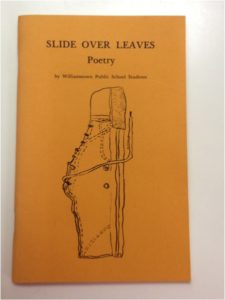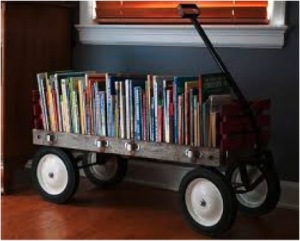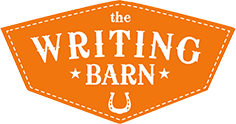This week’s Rejecting Rejection welcomes to the floor Jessica Storey Dils, YA fiction and picture book writer. Here she explains with a creative life comes the adaptation to uncertainty, to maybes, as a way to fuel your fire. She reminds us how many rejections very, very successful bestselling authors received before their big YES, and in doing so she’s reaffirmed the importance of never succumbing to a No.
Rejecting Rejection and Embracing Uncertainty
Jessica Storey Dils
The Rush. It’s that sweat-inducing, fluttery-heart, pitter-patter of hope—that internal physical leap that we feel when something new shows up in our inbox—something that resembles a Maybe.
We’ve chosen to write. We’ve chosen to create. To believe that our stories belong in the world. Let’s face it—as writers, it’s the only choice that makes us whole. But we’ve chosen a calling where the uncertainty of Maybe must somehow be enough to quiet our impatience and fuel our persistence and perseverance.
Of course, we’ve become much more familiar with No. “Every writer must go through it,” we’ve been told. One of my own childhood favorites, A Wrinkle in Time by Madeleine L’Engle, was rejected 26 times before it was published. J.K. Rowling received 12 consecutive publishing rejections before the world got a peek at Harry Potter. We writers collect rejections like weathered stretch marks, val iant scars that show how courageous we’ve been to share our creations no matter the cost, sending our stories out to be judged and considered by utter strangers.
iant scars that show how courageous we’ve been to share our creations no matter the cost, sending our stories out to be judged and considered by utter strangers.
I’ve always been a writer, though it’s taken me a long time to give myself permission to call myself that. I must have known it as a kid. At age five I felt that pitter-patter as I discovered a whole new magical island of words as I taught myself to read in our family’s twirly blue swivel chair. At age seven, I’d stash homemade, stapled booklets under my bed in shoeboxes filled with pictures, words, and eventually, stories. Slowly, I found an audience. Teachers in elementary school, small circles of peer writers, my own “writing teacher” who read my work and taught me over tea that real writing starts with revision. Slowly, I shared my writing with strangers—those first “published” stories and poems, in Slide Over Leaves (my elementary school’s literary magazine), Gemini (high school) and The Quill (college) where the editors became more and more selective. I joined their staff. Little did I know—I was contemplating this writing life.
Life shifted as I married, had a classroom of my own, and began teaching young readers and writers. It was there that my passion for writing became inextricably bound to my rekindled passion for children’s literature. I collected mountains of books for my students. Little did they know—I was also collecting them for me.
My own children arrived and those books now filled our shelves at home, spilling over into buckets and baskets and stacks in our tiny house that groaned from their weight. We’d snuggle and share these stories each day, and I’d watch as my children lit up. Little did I know—these books were lighting a path for me.
When motherhood sent me out to navigate the world from an entirely new point of view, it was these books that brought me to the authors who wrote them. Inheriting the reins of our town’s annual community festival of language—Words are Wonderful—I began meeting authors, illustrators, and storytellers. I shared these revered Pied Pipers with young students in hopes of inspiring a love of reading and writing. Little did I know—these visiting authors were inspiring me.
 It was when one of these authors told me about Vermont College of Fine Arts that I felt my first pitter-patter…my first Maybe. We are told that as storytellers we create narratives that ask the most basic question: “What if?” I was suddenly faced with my own. What if this was what I was supposed to be doing? What if I could pursue an MFA to dedicate myself to the craft of writing?
It was when one of these authors told me about Vermont College of Fine Arts that I felt my first pitter-patter…my first Maybe. We are told that as storytellers we create narratives that ask the most basic question: “What if?” I was suddenly faced with my own. What if this was what I was supposed to be doing? What if I could pursue an MFA to dedicate myself to the craft of writing?
I tested myself with that Maybe, and it grew into my first YES. I was accepted into the program, and I took a flying leap. At VCFA, I was challenged and stretched and embraced by an amazing community of writers who shared my passion—and my plight. And YES, after five life-changing, ten-day residencies and four intense semesters, I graduated with an MFA in Writing for Children and Young Adults in January of 2010. Thanks to my masterful advisors (Ellen Howard, Leda Schubert, Sharon Darrow and Rita Williams-Garcia), my incredible classmates and workshop peers, multiple packets of monthly deadlines, two thesis projects and a final residency lecture, I was calling myself what I’d never had the courage to call myself before. Yes, I am a writer. Yes, this is what I’m supposed to be doing. It felt like finding home. The Rush I felt upon graduation was a victory. A validation.
Little did I know—I was about to inhabit the land of No. The learning curve was steep as I set about preparing my manuscripts for submission, researching agents and agencies, crafting query letters, and sending my stories out into cyberspace. Each No deflated and stung, leaving its teeth marks behind. But each round made me stronger. Each rejection made me wiser. Each No with specific feedback got me closer to a Maybe. And always, there was the writing. That sacred island of possibility.
Finally, I felt that Rush. It was familiar, but also brand new. Exhilarating and heart-fluttering and terrifying all at once. Instead of No, I was hearing Maybe. I was receiving requests for full manuscripts—and a handful of exclusive ones. Opening my inbox each day filled me with hope and absolute terror.
Now, it was getting harder to quiet my impatience. Some of these new Maybes turned into Nos. These No’s were much more painful than the others had been—leaving lingering bruises. Somehow being closer to the possibility of Yes, as I began receiving what I termed, “Positive Rejections,” made the punch in the gut from the fact that it was still ultimately a rejection that much harder to stomach. I received notes such as this one, “There is so much to love about your writing. Your voice is authentic, your characters loveable, and your passion for your craft is clear. I’m just not feeling as strongly about this manuscript as I’d need to in order to represent you as your agent.” But as Sarah Lewis describes in her book, The Rise: Creativity, The Gift of Failure, and the Search for Mastery:
“A near win shifts our view of the landscape. It can turn future goals, which we tend to envision at a distance, into more proximate events. We consider temporal distance as we do spatial distance. (Visualize a great day tomorrow and we see it with granular, practical clarity. But picture what a great day in the future might be like, not tomorrow but fifty years from now, and the image will be hazier.) The near win changes our focus to consider how we plan to attain what lies in our sights, but out of reach.” (Lewis, p. 30)
Little did I know, those No’s—those “near wins”—were from agents who weren’t quite right for me. Little did I know—there was someone who would whole-heartedly believe in my writing, someone who would be as enthusiastic and passionate about my work as I was. Someone who ended up saying…Yes! That someone ultimately became my agent in November of 2013 when I signed with Sara Sciuto of Fuse Literary. The Rush I experienced from that very first Maybe-turned-Yes has been enough to fuel me into this next writing stage.
Because now I have a partner—an advocate—who sends my work out into the world to Editors at Publishing houses. Yes, I have received new rejections. And Yes, there are new uncertain Maybes. But now the two of us wait together with both terror and hope for the day when someone sends us that ultimate…YES.
Until then, I’ll take the Maybes and use them to push my work further. I will never get to feel the naïve, unblemished “What If?” as I did before leaping into this turbulent journey. But each time I sit down to write, I try to remember the light that got me here in the first place. I try to remember the Rush that I felt, discovering a whole new language on a magical island in a twirly blue swivel chair. I try to remember that seven-year-old kid who stashed stapled storybooks under her bed, who reveled in the secret joy of creating stories and poems from words. I know that I am writing for her. The young girl who knows nothing but What If?…Maybe. Yes…
As Dani Shapiro so exquisitely writes in her book, Still Writing: The Perils and Pleasures of a Creative Life:
“I try to remember that the job – as well as the plight, and the unexpected joy – of the artist is to embrace uncertainty, to be sharpened and honed by it. To be birthed by it. Each time we come to the end of a piece of work, we have failed as we have leapt – spectacularly, brazenly – into the unknown.” (Shapiro, p. 219-220)
So Reject Rejections. Revel in the Maybe. Ask yourself, “What if?” and believe in your ultimate Yes. Above all else, keep writing.
 Jessica Storey Dils writes fiction for young audiences, from picture book readers to young adults. She is the former Chair of Words are Wonderful, her local school’s festival of language, and she currently works as the Writing Fellows Program Coordinator for the Center for Learning in Action at Williams College and Mt. Greylock Regional School. She lives in Williamstown, Massachusetts with her husband and three teenagers, where they can often be found on a soccer field or cross-country trail. Jessica earned an MFA in Writing for Children and Young Adults from Vermont College of Fine Arts and is represented by Sara Sciuto of Fuse Literary.
Jessica Storey Dils writes fiction for young audiences, from picture book readers to young adults. She is the former Chair of Words are Wonderful, her local school’s festival of language, and she currently works as the Writing Fellows Program Coordinator for the Center for Learning in Action at Williams College and Mt. Greylock Regional School. She lives in Williamstown, Massachusetts with her husband and three teenagers, where they can often be found on a soccer field or cross-country trail. Jessica earned an MFA in Writing for Children and Young Adults from Vermont College of Fine Arts and is represented by Sara Sciuto of Fuse Literary.

Jess,
Thanks so much for taking the time to share your journey. So, so inspiring to read about the connection of dots over time spent loving reading and writing:)